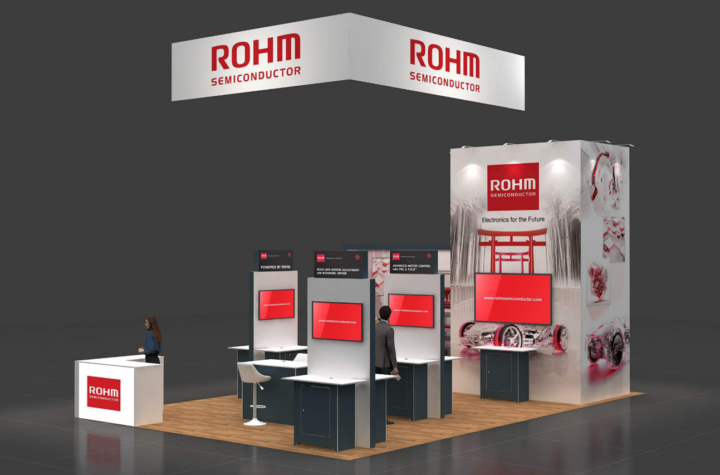
Detroit is hiring again – in part thanks to changes in US Federal Government legislation which in the1980s allowed Ford, General Motors and Chrysler to collaborate on standards and technological innovation.
“For a long time it was almost impossible to collaborate on virtually anything,” with the result that American companies started falling technologically behind their European and Japanese competitors, according to Steve Zimmer, executive director of the United States Council for Automotive Research LLC (USCAR). The Federal Government relaxed its anti-monopoly legislation, and today is part funder of many of the USCAR projects.
The organisation has come a long way since its founding in 1992, when the Big Three automakers had to learn how to work together on “pre-competitive” research and development, according to Zimmer – who recently took over from founding executive director Don Walkowicz. “Initially the culture in the companies assumed that you “don’t talk to competitors. Now we know how to collaborate with each other,” says Zimmer, who has worked with USCAR for a decade as the Chrysler director sitting on the board. He describes the shift from Walkowicz to himself as “seamless” due to the years of close cooperation and intimate involvement with USCAR.
The solution in the early years lay in choosing neutral ground – technologies which were in their embryonic stages at all three auto makers. The first collaboration was on composites “primarily because they were not being used by any of the three,” says Zimmer. Next was batteries, with the US auto makers having identified the trend towards electric vehicles in the 1980s already.
They formed the United States Advanced Battery Consortium (USBC), which became a USCAR subsidiary. From December 2010 through March of this year, USABC awarded advanced battery development and technology assessment contracts to nine firms, including: A123 Systems; SB LiMotive subsidiary Cobasys of Orion, Mich; Maxwell Technologies of San Diego, California; SK Energy of Seoul, South Korea; Envia Systems Inc. of Newark, Calif.; Quallion LLC of Los Angeles, Calif.; ActaCell Inc. of Austin, Texas; Leyden Energy Inc. of Freemont, Calif.; and K2 Energy Solutions Inc. of Henderson, Nev.
The contracts are a good example of how technology developed under the auspices of USCAR has gone global, along with the rest of the auto industry. For a start, SK is not American, and secondly, the technology developed will go into vehicles around the world. “Everything we work on has global reach. Any company or country has to collaborate as effectively as they compete in order to survive,” he says. Successes include the commonization of fasteners used in the assembly of vehicles, the standardization of wiring specifications across the industry, and more recently, the standardisation of coupler plug for electric and hybrid vehicles – SAE J1772.
While USCAR’s primary focus remains the American market, globalisation has seen it expand beyond the original three members. Chrysler itself has gone through dramatic changes since the founding of USCAR, and both Ford and General Motors have established themselves as global manufacturers.
The organisation now has around 50 teams working on vehicle electrification; hydrogen and fuel cells; advanced powertrains; energy storage; electrical/electronic; safety; manufacturing; and environmental. All teams work to develop common standards for the industry in order to break down the barriers which prevent technologies from coming to market. The objective is to reach the economies of scale that are possible only through common standards – which are shared across the industry. Here, a key focus area is the design and assembly of “multi material vehicles.” USCAR teams are working on the whole supply chain, from the mining, refining or growing of the materials through to scrapping. Economies of scale bring improved products to customers and profits to manufacturers,” says Zimmer.
Suppliers are brought into the mix, as can be seen by the award of the battery contracts. The USCAR teams consist of representatives, engineers and scientists from all three companies. In most cases they oversee work done on contract by outside suppliers, such as component manufacturers. The developers of new technologies, materials and components will also be in a strong position to supply them into the future. A new trend, confirms, Zimmer is to look beyond the motor industry – particularly when it comes to the connected vehicle.
“One of the areas we are very interested in is the relationship of Internet with the vehicle. There are a number of security issues related to bringing information into the vehicle and devices in the car. We need to ensure that privacy isn’t invaded, and that systems are not compromised and affect the safety and operation of vehicle”.
The issue is bigger than the motor industry, and the USCAR team is working with others from the medical and space industry through a task group called by the National Science Foundation, which established a cyber security science and technology centre in 2005. “This shows how USCAR influences what other people are working on. We provide guidance and an interface which gives access to a broad range of experts in each of the companies.
Technologies are coming at us much faster. The diversity of technology to be found in vehicles is growing at an increasing pace. No single industry has the resources, or the intelligence to do it all themselves,” he says.





More Stories
Bangkok International Motor Show 2025 – The Talk of Sensuous Automotive
Earn GHG reduction values through MOL Pure Car Carrier “Book and Claim (B&C)” service
Automotive Industries (AI) Newsletter